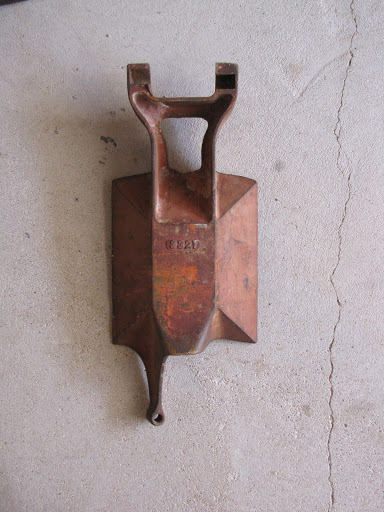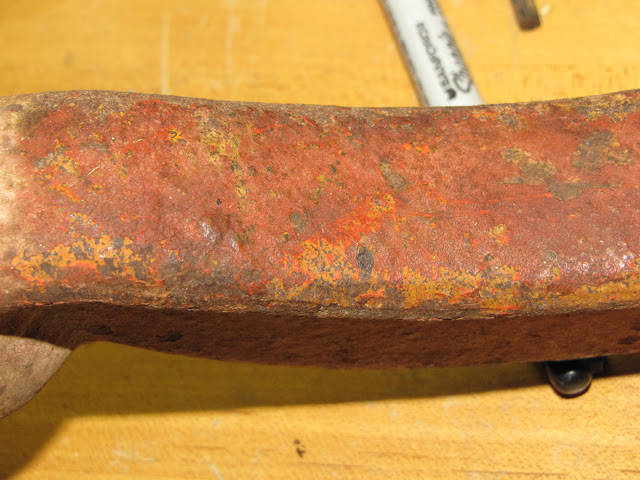I have spent the last few sessions disassembling the mill. I photograph everything as I go so I can remember how to put everything back together. With the mill sitting on two furniture dollies I rotated the mill and photographed every detail in the assembled state from lots of different angles. Next, I began removing the larger accessory items like the grain hopper and feed chute.

Once I have them off the mill I take snap shots of the piece from all angles looking to capture specific details or damage. For instance, here is the bottom of the feed chute. With what I believe is the part number for the chute

After a complete photo documentation, I make some handwritten notes in a log book especially if there are damaged feature or interesting items worth recording. Below I am trying to determine exactly what the original color was. There appear to be two coats of paint. One thin yellow layer similar to caterpillar yellow and one thick heavy top layer similar to Massey Ferguson Red.

While disassembling the Bedstone Support Bearing I found a aftermarket component added to the upper bearing clamp assembly. It is a pipe fitting. It was placed under the bearing cap presumably to take up slack space in the clamp. I think there may have been a spring here originally pushing down in the upper spherical bearing journal insert.

Below is an image of the inboard face of the bedstone. It looks to be in good condition. The bedston is missing a steel perimeter hoop. I am guessing this type of bedstone mounting arrangement was deployed to allow the bedstone to tilt on the ear features located at 3 and 9 o'clock. Perhaps this would allow the stone to align more precisely with the runner stone.

The next image is of the inboard face of the runner stone. Also of note, is the grain auger, Bedstone mounting tabs, and the flour exit chute opening located in the main housing sheet metal.. The runner stone has a very large chip missing from one corner. This may require replacing the stone.


